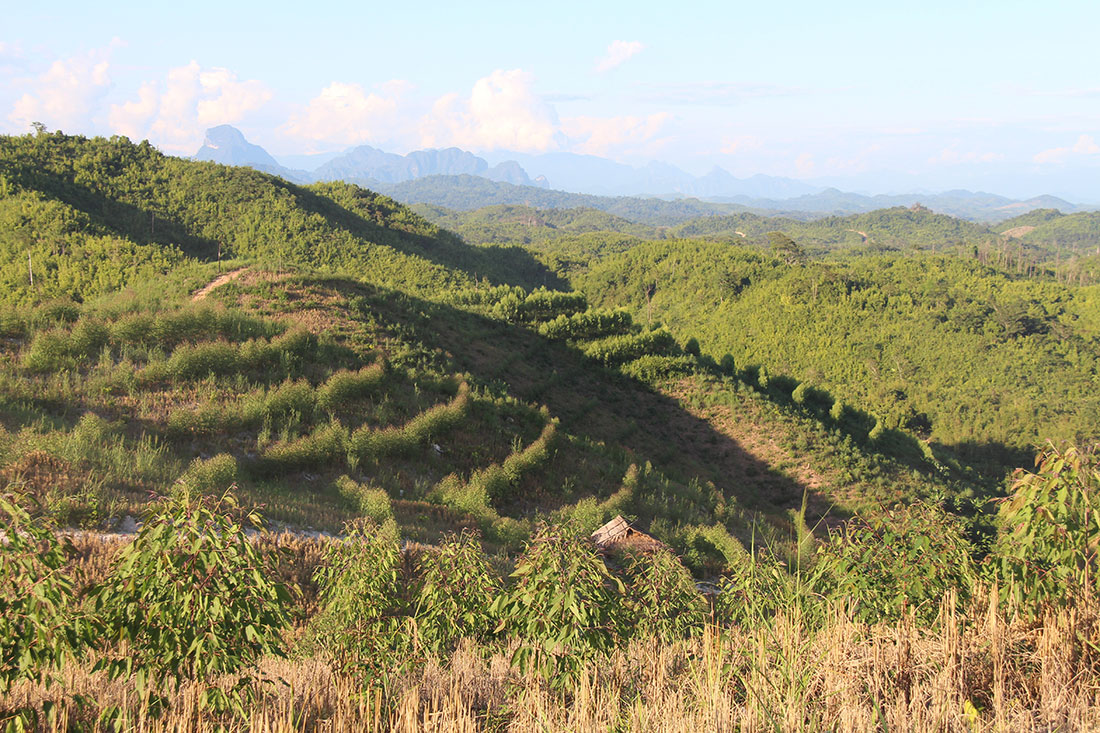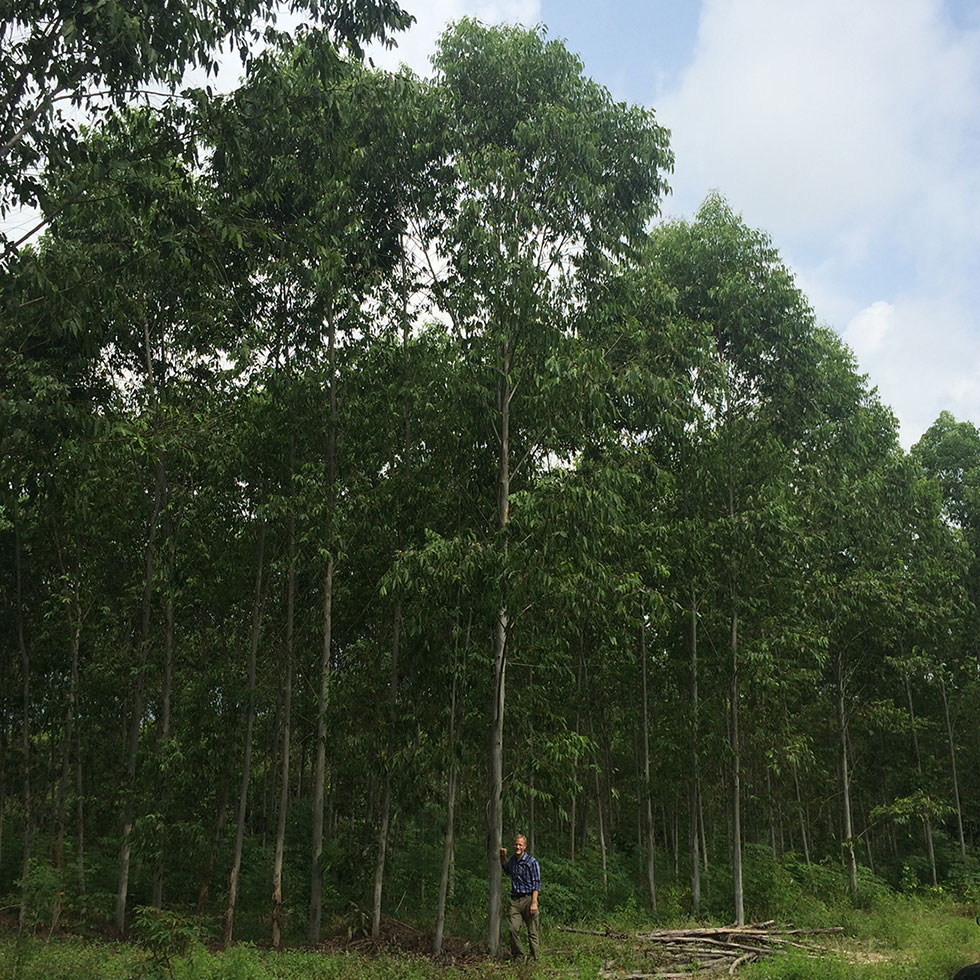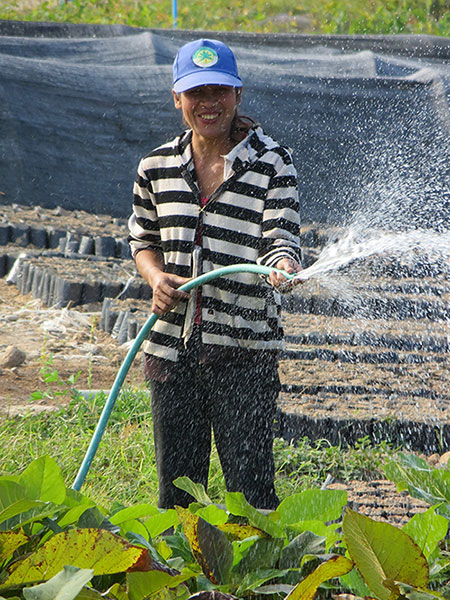GENERAL

Eucalypts form a significant resource to support several major industries and contribute to alleviation of rural poverty. Eucalypts are planted by companies and smallholders alike because of their high productivity and short rotation length. They offer a low risk with reasonable returns, making them a very attractive alternative for smallholders.
Eucalypts are the most common short fiber source of pulpwood to produce pulp. Its short and uniform fiber length, combined with low coarseness, are properties that make it suitable to make high quality paper and tissue. Eucalypts are also suited to dissolving pulp, which is used to make many industrial products such as rayon for high-quality fabrics, paper-related products such as vulcanized fiber, and various other specialty products.
SILVICULTURE

Eucalypts for commercial plantations are propagated vegetatively at a large scale in nurseries using genetically superior planting material. The development of this material is done though targeted tree improvement programs. Tree improvement programs have significantly improved the productivity of eucalypt plantations and resistance to pest and disease. Careful matching of species to site must be done to ensure the benefits of tree improvement are maximized.
To ensure rapid early development, eucalypts are planted in carefully prepared, weed free and fertilized sites when the soil moisture and climatic conditions are optimal. Follow up weeding and fertilizing is conducted to ensure high growth rates are sustained.
The spacing of trees at planting, subsequent thinning and timing of final harvest are strongly controlled by market forces, because they markedly influence the volume and diameter development potential of plantations. Spacing, thinning and final harvest regimes can be developed to suite site conditions and manipulate the diameter of logs produced in response to market requirements. Spacing can be as low as 500 or as high as 2000 trees per hectare. Thinning can be conducted between 2 and 4 years, or not at all, and final harvest can occur between 3 and 12 years. In general, high stocking, low thinning and early final harvest favors production of biomass or pulp logs, while lower stocking, high thinning and late final harvest favors the production of saw logs.
Pest and disease is managed mostly through prevention. Planting material with strong pest and disease resistance is selected, and different clones are planted to improve resilience. Plant spacing is modified and plantations are designed to limit spread.
EUCALYPTS AND THE ENVIRONMENT

Around the world, pressure is being placed on natural forests due to demand for fuel wood and timber. Eucalypts are a fast-growing alternative to native species, which are often difficult to establish. Eucalypts can save biodiversity by preventing the destruction of natural forests.
Water
Careful management of hydrological impacts is important for any landuse. Forested catchments reduce water yield compared to non-forested catchments. However, forests regulate water flow, preventing extremes. The effect of eucalypts in reducing water yield is probably less than that of pine and greater than that of other broad leaved species. One important aspect of eucalypts is water use efficiency, which is much greater than other tree species, meaning that per unit of water consumed, eucalypts produce more biomass than alternative plantation species. Eucalypt plantations can improve the infiltration capacity of the soil to reduce run-off and to activate the soil water charging, filtering and cycling process. Practices to improve interception and infiltration include retention of litter, development of an understory or of a compatible native ground cover; development of a nitrogen fixing compatible ground cover, and in water short areas lower tree stocking to reduce water consumption.
Soil
Eucalypts specifically do not cause soil erosion and if managed correctly can sustain or improve the condition of the soil on a site. Eucalypts are well suited to degraded soils and will often grow where native species will not grow. For this reason, eucalypts can be used to restore damaged forest ecosystems where natural regeneration is not possible in the short term. Eucalypt foliage and bark contains a large amount of nutrients, so when plantations are harvested it is a good management practice to retain these on site to maintain the nutrient status of the soil. Application of fertilizer can be used to add nutrients to the soil. Allelopathy of eucalypts has not been shown, which is supported by the ability to grow many crops in intercropping agroforestry systems. The use of soil conservation techniques combined with nutritional management results in eucalypt plantation being able to be sustained on the same site for many rotations without degradation of the soil.
Burapha Agro-Forestry Co., Ltd, 23 Singha Road, Ban Phonexay, Vientiane, Lao PDR - Tel: +856 21 451 841, Fax: +856 21 451 844
